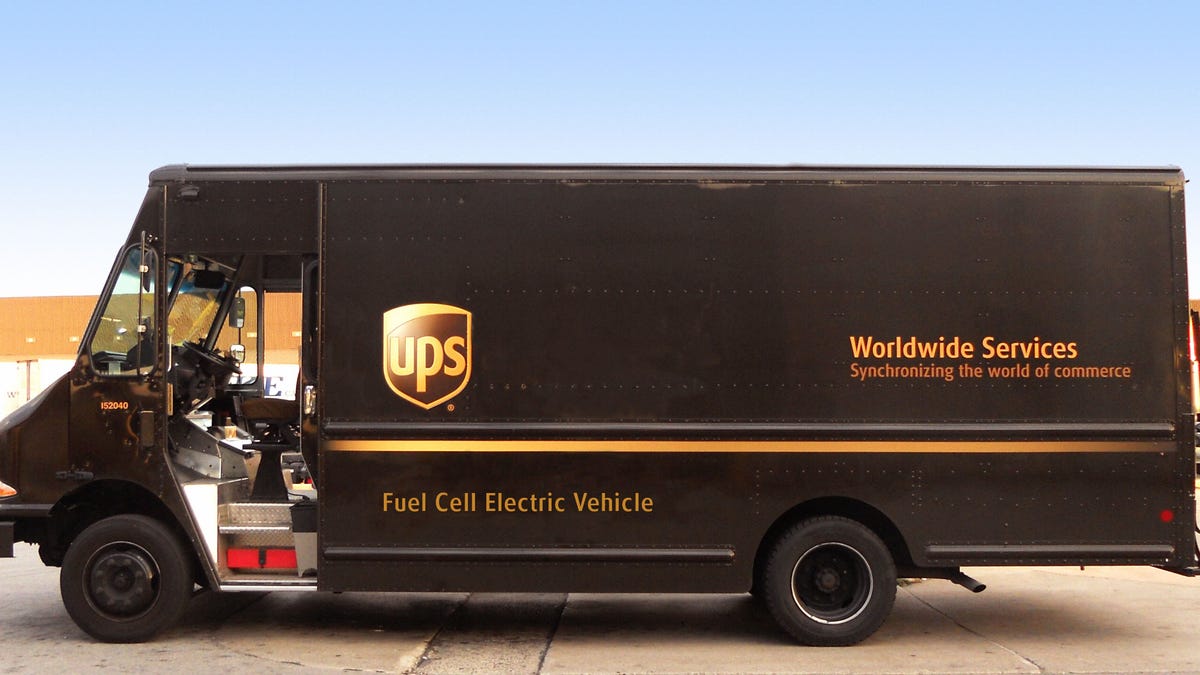UPS begins testing hydrogen fuel-cell delivery truck
It'll be on the mean streets of Sacramento later this year.

Delivery trucks pack on the miles, so increasing their efficiency can go a long way to cutting emissions and fuel costs. UPS thinks it's on to something with its latest efficient delivery truck prototype.
UPS just unveiled a prototype delivery truck. While it might look the same, underneath the metal is a hydrogen fuel-cell powertrain, which takes compressed hydrogen gas and converts it into electricity, with the only byproduct being water. Unlike other systems, which might power certain features with electricity, this system is all encompassing, allowing the whole truck to run on hydrogen.
The UPS fuel-cell powertrain can store 10 kilograms of hydrogen fuel. The 32-kilowatt fuel cell then produces electricity that feeds a 45-kWh battery, which powers the vehicle. UPS estimates the prototype's range at 125 miles.
"The challenge we face with fuel-cell technology is to ensure the design can meet the unique operational demands of our delivery vehicles on a commercial scale," said Mark Wallace, UPS senior vice president of engineering and sustainability, in a statement. "This project is an essential step to test the zero tailpipe emissions technology and vehicle on the road for UPS and the transportation industry."
UPS' first fuel-cell prototype will be deployed in Sacramento later this year. It plans to roll out additional fuel-cell trucks in order to accrue about 5,000 hours of performance testing. All these trucks will end up in California, because it's the state with the largest hydrogen infrastructure. Most states lack hydrogen fuel-cell filling stations entirely.
Some of the money for this program comes from a 2013 Department of Energy grant that focuses on hydrogen fuel-cell technology in commercial delivery vehicles. Considering just how much fuel delivery vehicles need each year, this could save logistics companies -- and, eventually, the consumer -- a solid chunk of change.

